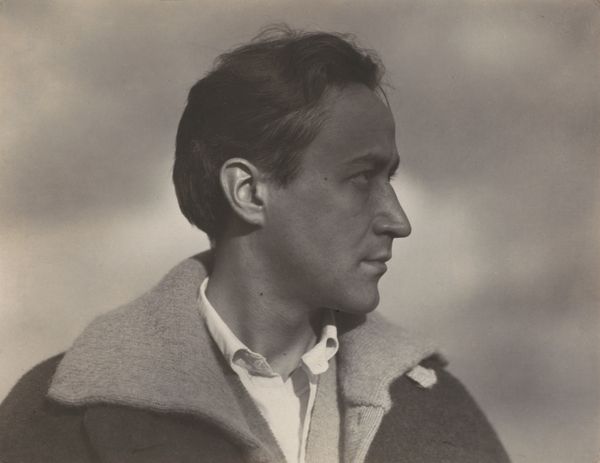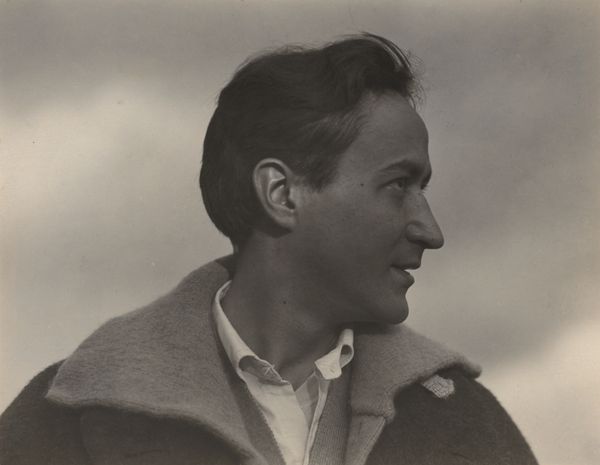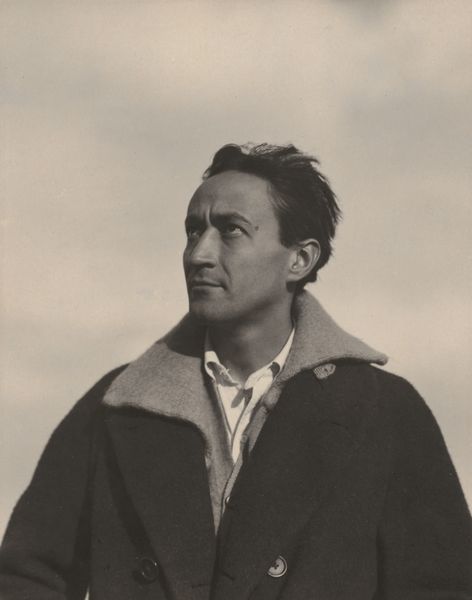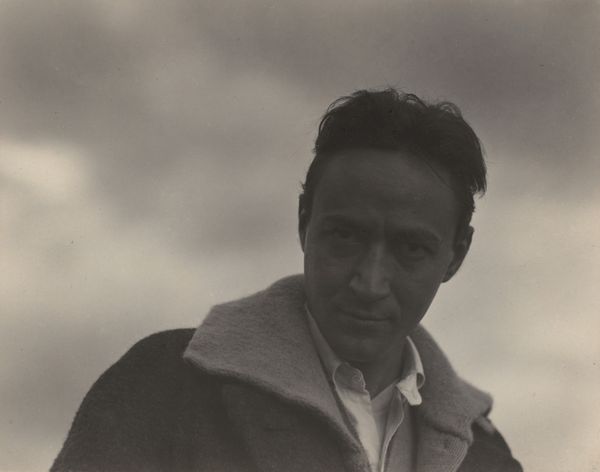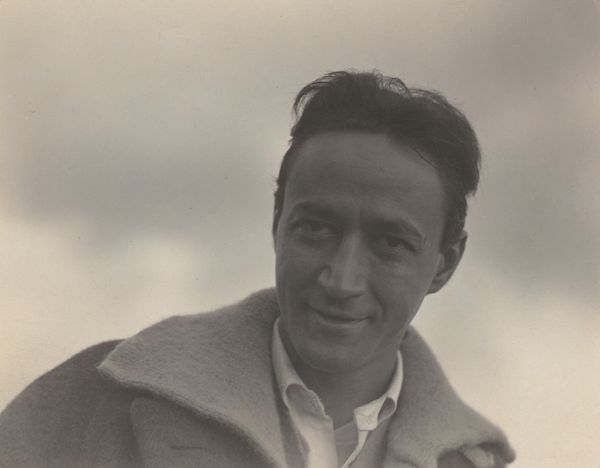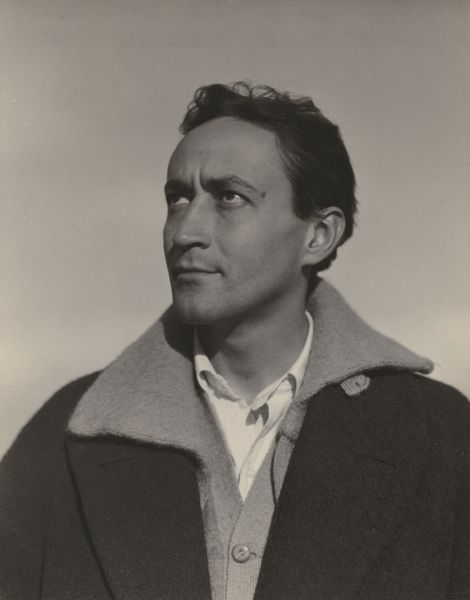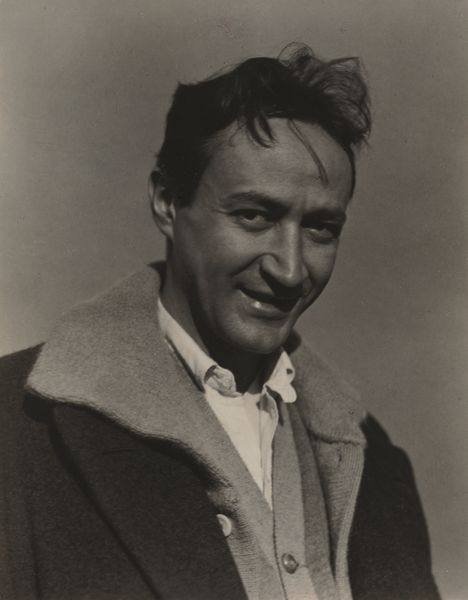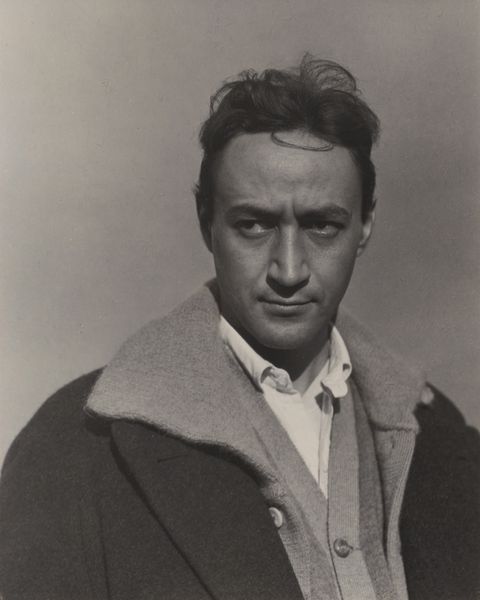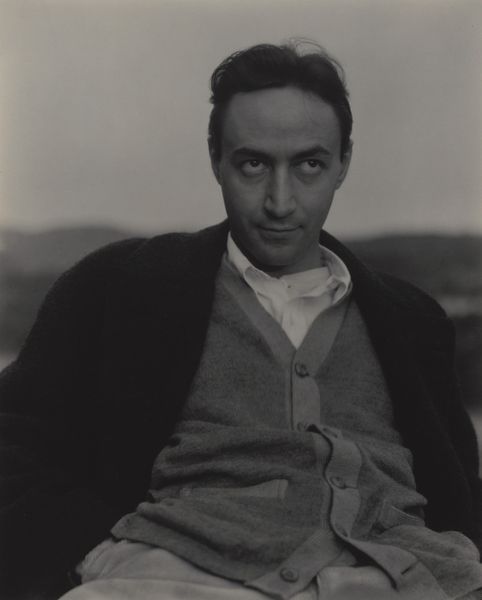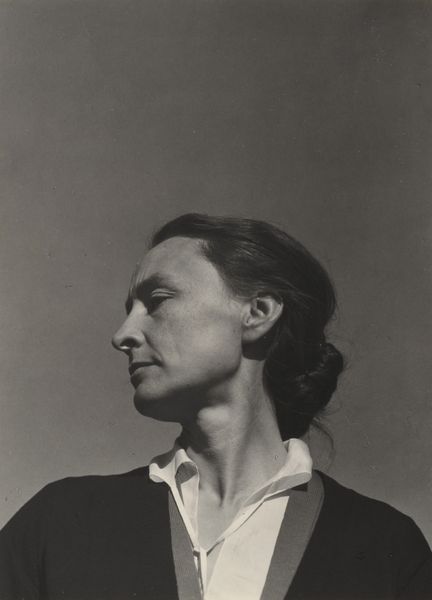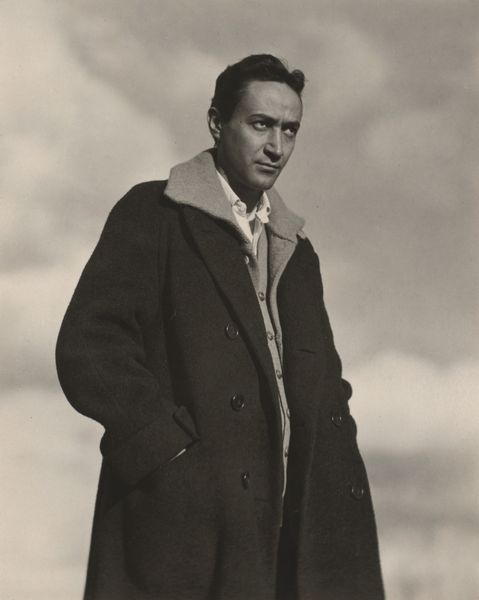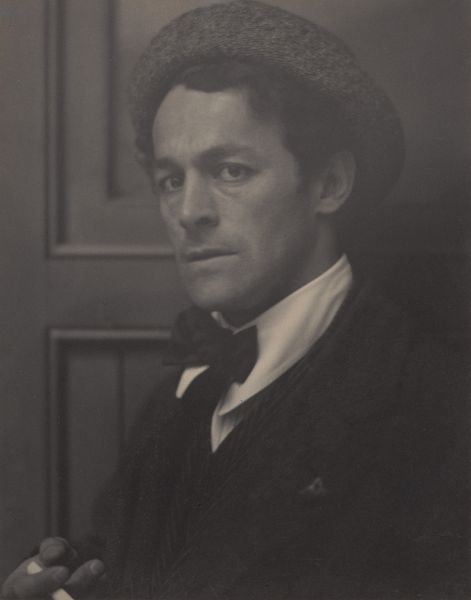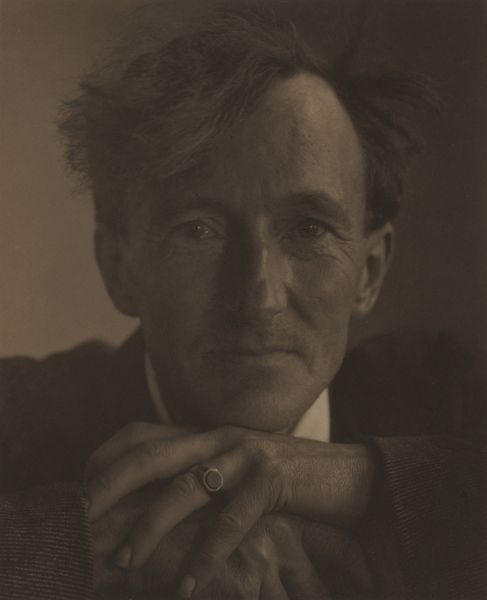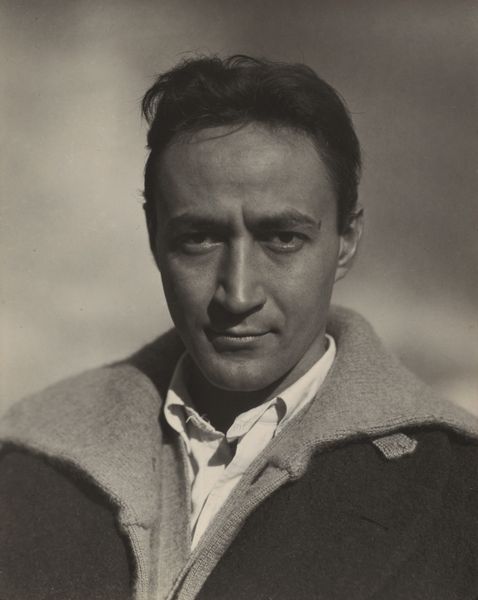
photography, gelatin-silver-print
#
portrait
#
pictorialism
#
photography
#
historical photography
#
gelatin-silver-print
#
modernism
Dimensions: sheet (trimmed to image): 9.1 × 11.7 cm (3 9/16 × 4 5/8 in.) mount: 34.2 × 27.55 cm (13 7/16 × 10 7/8 in.)
Copyright: National Gallery of Art: CC0 1.0
Editor: Here we have Alfred Stieglitz’s gelatin silver print, "Jean Toomer," taken in 1925. It's a striking profile portrait; there's a pensive mood, somehow fragile, despite Toomer's strong features. How do you interpret this work within the context of its time, and Stieglitz's other portraits? Curator: Well, I see this as a powerful statement about identity, specifically in the context of the Harlem Renaissance. Stieglitz, though not Black himself, played a pivotal role in promoting modern art, including work by African American artists and intellectuals. This portrait captures Toomer, a writer grappling with his own mixed-race heritage and complex relationship to racial identity in America. Editor: So the very act of Stieglitz photographing Toomer, a prominent figure of the Harlem Renaissance, was a politically charged decision? Curator: Precisely. Stieglitz wasn't just documenting a face; he was validating Toomer’s intellectual and artistic contributions. His photographic techniques, characteristic of pictorialism and then modernism, often imbued his subjects with an emotional depth – a way of making visible the unseen struggles and aspirations. Consider how the soft focus and delicate light work here... Editor: It almost romanticizes Toomer, doesn’t it? Yet there’s that strong profile, looking resolutely forward, beyond the frame... It's not a passive image. Curator: And that tension is crucial! Toomer's own writings wrestled with notions of race and belonging. Stieglitz captures that very tension: the internal questioning and external perception, playing with ideas about identity. The picture embodies the intellectual and social ferment of the 1920s, doesn’t it? It raises the question: what does it mean to represent someone, especially across lines of race and privilege? Editor: I hadn’t considered Stieglitz's positionality as a photographer in that light before. It makes me think about representation so much differently! Curator: Exactly! It's about challenging us to think critically about the power dynamics inherent in portraiture and its ability to shape cultural narratives.
Comments
No comments
Be the first to comment and join the conversation on the ultimate creative platform.
